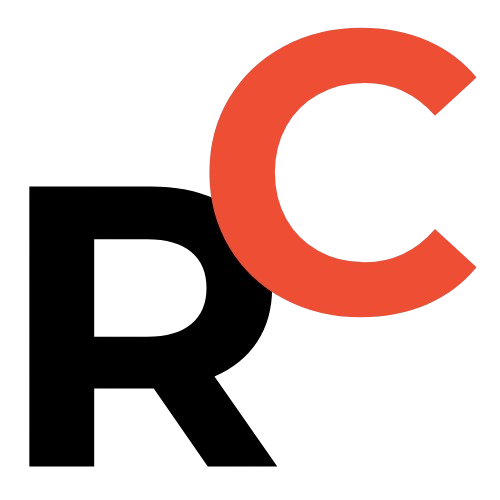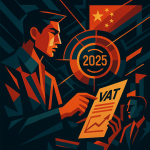Key Points
- China’s economy in May 2025 showed overall steady performance with strategic shifts towards high-quality development and innovation.
- Industrial production grew 5.8% YOY, with significant leads from equipment manufacturing (+9.0%) and high-tech manufacturing (+8.6%). Product innovation is strong, with 3D printing equipment soaring 40.0% and NEVs up 31.7%.
- The services sector accelerated (+6.2%), driven by dynamism in Information Transmission, Software and IT Services (+11.2%). The Services Business Activity Expectation Index stands at a positive 56.5%.
- Retail sales rebounded significantly (+6.4%), fueled by government trade-in policies; sales of household appliances and audio-visual equipment surged 53.0%.
- Fixed asset investment grew 3.7% YOY (or 7.7% excluding real estate). Manufacturing investment (+8.5%) and high-tech industries (especially Information Services, +41.4%) saw robust growth, while real estate investment declined (-10.7%).
- The urban surveyed unemployment rate dipped slightly to 5.0%, maintaining a generally stable job market. The core CPI increased by 0.6% YOY, suggesting a gentle recovery in underlying consumer demand despite overall low CPI.

China’s Economy May 2025 signals a period of steady performance and strategic shifts, offering a fascinating look for investors, founders, and tech enthusiasts.
In May 2025, under the guidance of the Central Committee of the Communist Party of China and the State Council, China’s economy showcased resilience.
Let’s break down what’s happening.
The nation focused on progress while ensuring stability an approach crucial in today’s global landscape.
This involved a full embrace of the new development philosophy, speeding up a new development pattern, and a solid push for high-quality development.
Macro policies became more proactive and effective, helping the national economy navigate pressures smoothly.
We saw stable growth in both production and demand, a generally steady employment scene, and exciting new growth drivers emerging.
The overall development trajectory is clearly moving towards higher quality and innovation.
Industrial Production: Tech and Equipment Manufacturing Lead the Charge in May 2025
Industrial output showed solid signs in May.
The value added of industrial enterprises above the designated size (those with annual main business income of ¥20 million RMB ($2.76 million USD) or more) grew by 5.8 percent year-on-year.
Month-on-month, this was a 0.61 percent uptick.
Breaking it down by major categories:
- Mining industry: +5.7 percent year-on-year.
- Manufacturing: +6.2 percent year-on-year.
- Production and supply of electricity, heat, gas, and water: +2.2 percent year-on-year.
The real stars? Equipment manufacturing and high-tech manufacturing.
- Equipment manufacturing value added: Skyrocketed by 9.0 percent year-on-year.
- High-tech manufacturing value added: Climbed by 8.6 percent year-on-year.
These figures are notably 3.2 and 2.8 percentage points faster, respectively, than the overall industrial growth, highlighting a strategic shift towards advanced industries.
By ownership type, growth was broad-based:
- State-holding enterprises: +3.8 percent.
- Share-holding enterprises: +6.3 percent.
- Foreign, Hong Kong, Macao, and Taiwan invested enterprises: +3.9 percent.
- Private enterprises: +5.9 percent.
Product-wise, the innovation drive is evident. Check out these growth numbers:
- 3D printing equipment: A massive 40.0 percent increase year-on-year. This signals a serious push in advanced manufacturing capabilities.
- Industrial robots: Up by 35.5 percent. Automation is clearly accelerating.
- New energy vehicles (NEVs): Grew by 31.7 percent. China continues to dominate the EV space. For potential investors, exploring the NEV supply chain could be interesting.
Looking at the bigger picture, from January to May, the value added of industrial enterprises above designated size jumped 6.3 percent year-on-year.
The Manufacturing Purchasing Managers’ Index (PMI) for May was 49.5 percent.
While this is a 0.5 percentage point increase from April, a PMI below 50 typically indicates contraction. However, the improvement is a positive sign.
More optimistically, the Production and Operation Expectation Index for enterprises hit 52.5 percent, up 0.4 percentage points, suggesting businesses are feeling more confident about the future.
Profits are also looking up. From January to April, total profits of these industrial enterprises reached ¥2,117.0 billion RMB ($292.00 billion USD), a 1.4 percent year-on-year increase.

Resume Captain
Your AI Career Toolkit:
- AI Resume Optimization
- Custom Cover Letters
- LinkedIn Profile Boost
- Interview Question Prep
- Salary Negotiation Agent

Services Sector Surges: Modern Services Show Strong Momentum
The services sector wasn’t left behind, posting accelerated growth in May.
The nationwide Services Production Index grew by 6.2 percent year-on-year, picking up 0.2 percentage points from the previous month.
Certain modern service sectors were particularly dynamic:
- Information Transmission, Software and Information Technology Services: A stellar 11.2 percent growth. This is a hotspot for tech investment and talent. Consider a deep dive into China’s booming SaaS market.
- Leasing and Business Services: Up by 8.9 percent.
- Wholesale and Retail Trade: Grew by 8.4 percent.
These all outpaced the overall Services Production Index, showcasing where the dynamism lies.
From January to May, the nationwide Services Production Index increased by 5.9 percent year-on-year.
Operating revenue for service enterprises above a designated size also expanded, growing by 7.2 percent year-on-year from January to April.
The Services Business Activity Index in May stood at 50.2 percent, a slight increase of 0.1 percentage points from April, indicating expansion.
The Services Business Activity Expectation Index also rose by 0.1 percentage points to 56.5 percent, meaning service providers are quite optimistic.
Sectors like railway transport, air transport, postal services, telecommunications, broadcasting, and internet software and IT services all had Business Activity Indexes above 55.0 percent, indicating high levels of activity.

Retail Rebounds: Trade-In Policies Fuel Consumer Spending
Market sales saw a significant rebound in May, a great sign for domestic demand.
Total retail sales of consumer goods hit ¥4,132.6 billion RMB ($570.00 billion USD).
This is a 6.4 percent year-on-year increase, accelerating 1.3 percentage points from April.
Month-on-month growth was 0.93 percent.
Location-wise:
- Urban areas: Retail sales reached ¥3,605.7 billion RMB ($497.34 billion USD), up 6.5 percent.
- Rural areas: Retail sales were ¥526.9 billion RMB ($72.68 billion USD), up 5.4 percent.
By consumption type:
- Retail sales of goods: ¥3,674.8 billion RMB ($506.80 billion USD), an increase of 6.5 percent.
- Catering revenue: ¥457.8 billion RMB ($63.14 billion USD), an increase of 5.9 percent. People are eating out more!
Sales of basic necessities and some upgraded goods showed strong growth:
- Grain and oil, food: +14.6 percent.
- Gold, silver, and jewelry: +21.8 percent. A traditional safe haven and popular gift.
- Sports and recreation goods: +28.3 percent. Reflects changing lifestyle trends.
The consumer goods trade-in policy is clearly working wonders for certain categories.
Retail sales by units above designated size for these items boomed:
- Household appliances and audio-visual equipment: A staggering +53.0 percent!
- Telecommunication equipment: +33.0 percent. Likely new phone releases and upgrades.
- Cultural and office supplies: +30.5 percent.
- Furniture: +25.6 percent.
This is a prime example of targeted policy driving significant consumer activity.
From January to May, total retail sales of consumer goods reached ¥20,317.1 billion RMB ($2.80 trillion USD), a 5.0 percent year-on-year increase.
National online retail sales continued their strong performance, hitting ¥6,040.2 billion RMB ($833.13 billion USD), up 8.5 percent year-on-year.
Of this, physical goods online retail sales were ¥4,987.8 billion RMB ($687.97 billion USD), an increase of 6.3 percent.
This accounted for 24.5 percent of total retail sales of consumer goods – nearly a quarter of all retail happening online!
From January to May, services retail sales (like travel, entertainment, etc.) grew by 5.2 percent year-on-year.

Find Top Talent on China's Leading Networks
- Post Across China's Job Sites from $299 / role, or
- Hire Our Recruiting Pros from $799 / role
- Qualified Candidate Bundles
- Lower Hiring Costs by 80%+
- Expert Team Since 2014
Your First Job Post

Fixed Asset Investment: Manufacturing Shines Amidst Real Estate Woes
Investment trends offer a mixed but insightful picture.
From January to May, national fixed asset investment (excluding rural households) reached ¥19,194.7 billion RMB ($2.65 trillion USD).
This is a 3.7 percent year-on-year increase.
However, if we exclude real estate development investment, the growth is a much healthier 7.7 percent.
Let’s look at the sectors:
- Infrastructure investment: Up by 5.6 percent year-on-year.
- Manufacturing investment: A strong +8.5 percent. This aligns with the industrial production focus on upgrading.
- Real estate development investment: Fell by 10.7 percent. The property sector continues to be a drag, an area policymakers are closely watching. For more on this, check our analysis on China’s property market.
Nationwide, the sales area of new commercial buildings was 353.15 million square meters, down 2.9 percent year-on-year.
The sales value of new commercial buildings was ¥3,409.1 billion RMB ($470.22 billion USD), a decrease of 3.8 percent.
By industry type:
- Primary industry (agriculture, etc.): Investment grew by 8.4 percent.
- Secondary industry (manufacturing, construction): Investment up by 11.4 percent. This is a significant driver.
- Tertiary industry (services): Investment fell by 0.4 percent.
Private investment remained flat year-on-year.
But, similar to the overall picture, excluding real estate development investment, private investment grew by a respectable 5.8 percent.
Investment in high-tech industries is booming, a clear strategic priority:
- Information Services: A massive +41.4 percent!
- Aviation, Spacecraft and Equipment Manufacturing: +24.2 percent.
- Computer and Office Equipment Manufacturing: +21.7 percent.
- Professional Technical Services: +11.9 percent.
These figures underscore China’s commitment to becoming a tech powerhouse.
In May, fixed asset investment (excluding rural households) grew by 0.05 percent month-on-month, showing some continued momentum.

ExpatInvest China
Grow Your RMB in China:
- Invest Your RMB Locally
- Buy & Sell Online in CN¥
- No Lock-In Periods
- English Service & Data
- Start with Only ¥1,000

Trade Dynamics: Exports Grow, Structure Optimizes
China’s trade landscape showed continued growth in imports and exports, with an improving trade structure.
In May, the total value of imports and exports of goods was ¥3,809.8 billion RMB ($525.49 billion USD), a 2.7 percent year-on-year increase.
- Exports: ¥2,276.7 billion RMB ($314.03 billion USD), up 6.3 percent. Strong export performance is a key takeaway.
- Imports: ¥1,533.1 billion RMB ($211.46 billion USD), down 2.1 percent.
From January to May, the total value of imports and exports reached ¥17,944.9 billion RMB ($2.48 trillion USD), a 2.5 percent year-on-year rise.
- Exports (Jan-May): ¥10,668.2 billion RMB ($1.47 trillion USD), an increase of 7.2 percent.
- Imports (Jan-May): ¥7,276.7 billion RMB ($1.00 trillion USD), a decrease of 3.8 percent.
This indicates a growing trade surplus.
Key structural insights from January to May:
- General trade imports and exports grew by 0.8 percent, accounting for 64.2 percent of total trade value.
- Imports and exports by private enterprises surged by 7.0 percent.
- Private enterprises now account for 57.1 percent of total trade value, up 2.4 percentage points from last year. The dynamism of the private sector in international trade is increasingly evident.
- Exports of mechanical and electrical products grew by 9.3 percent, making up 60.0 percent of total export value. This reinforces the shift towards higher-value exports.

Employment: Stability Prevails, Urban Unemployment Dips
The job market remained generally stable, a crucial pillar for social and economic health.
From January to May, the average urban surveyed unemployment rate nationwide was 5.2 percent.
In May, the national urban surveyed unemployment rate was 5.0 percent, a slight improvement, down 0.1 percentage points from April.
Breakdown of May’s unemployment rates:
- Local household registered population: 5.0 percent.
- Migrant population: 5.0 percent.
- Migrant agricultural household registered population: 4.9 percent.
The urban surveyed unemployment rate in 31 large cities was also 5.0 percent, down 0.1 percentage points from the previous month.
The average weekly working hours of employed persons in enterprises nationwide stood at 48.5 hours.
Stable employment is a significant win and provides a solid foundation for consumer confidence.

Price Check: CPI Low, Core CPI Gently Recovers, PPI Remains Down
Inflation metrics present a nuanced picture.
In May, the nationwide Consumer Price Index (CPI) decreased by 0.1 percent year-on-year and by 0.2 percent month-on-month.
This low inflation environment is something to watch.
By category (year-on-year changes in May):
- Food, tobacco, and alcohol: +0.1%
- Clothing: +1.5%
- Residence: +0.1%
- Daily necessities and services: +0.1%
- Transportation and communication: -4.3% (likely due to energy price fluctuations)
- Education, culture, and entertainment: +0.9%
- Healthcare: +0.3%
- Other goods and services: +7.3%
Within food prices:
- Fresh vegetable prices: -8.3%
- Grain prices: -1.4%
- Pork prices: +3.1% (a key item in the Chinese diet)
- Fresh fruit prices: +5.5%
The core CPI (excluding food and energy prices) increased by 0.6 percent year-on-year.
This is an increase of 0.1 percentage points from April, suggesting a gentle recovery in underlying consumer demand.
From January to May, the nationwide CPI decreased by 0.1 percent year-on-year.
On the producer side, prices remained subdued.
In May, the nationwide Producer Price Index for Industrial Producers (PPI) decreased by 3.3 percent year-on-year and by 0.4 percent month-on-month.
The nationwide Purchaser Price Index for Industrial Producers decreased by 3.6 percent year-on-year and by 0.6 percent month-on-month.
From January to May, both these producer price indices decreased by 2.6 percent compared to the same period last year.
While low CPI can sometimes signal deflationary pressures, the recovering core CPI and strong retail sales suggest demand isn’t collapsing. The low PPI indicates continued pressure on industrial profit margins.
Looking Ahead: Consolidating Recovery and High-Quality Growth
Overall, in May 2025, the comprehensive effect of policies continued to unfold.
The results of stabilizing the economy and promoting development are apparent.
The national economy maintained a generally steady and stable development trend with progress, highlighting the resilience and vitality of China’s economy.
However, it’s important to acknowledge the challenges:
- External unstable and uncertain factors remain numerous.
- The internal driving force for expanding domestic demand needs further strengthening.
- The foundation for sustained economic recovery and improvement still needs to be consolidated.
The path forward involves adhering to Xi Jinping Thought on Socialism with Chinese Characteristics for a New Era.
The focus will be on implementing the decisions of the Central Committee and State Council, maintaining the principle of pursuing progress while ensuring stability, and fully implementing the new development philosophy.
Key priorities include accelerating the new development pattern, coordinating domestic and international economic work, expanding domestic demand, strengthening domestic circulation, stabilizing employment, and promoting high-quality development for sustained and healthy economic progress.
The journey of China’s Economy May 2025 and beyond will be about balancing these dynamic factors to ensure robust and sustainable growth.

Understanding The Data: Important Notes
(1) The growth rates of value added of industrial enterprises above the designated size and its classified items are calculated at comparable prices, representing real growth rates; unless otherwise specified, other indicators are calculated at current prices, representing nominal growth rates.
(2) The statistical coverage of industrial enterprises above the designated size refers to industrial enterprises with annual main business income of ¥20 million RMB ($2.76 million USD) or more.
Changes in scope occur annually. To ensure comparability, statistical coverage for year-on-year growth is kept consistent with the current period’s scope. This can lead to differences from previously published data due to: First, changes in statistical units (new enterprises meeting the threshold, existing ones falling below, new establishments, bankruptcies). Second, removal of inter-regional duplicate counting in product output for some enterprise groups.
(3) The Services Production Index refers to the change in output of the services sector in the reporting period relative to the base period, after excluding price factors.
(4) The statistical coverage of total retail sales of consumer goods includes legal entities, industrial activity units, and self-employed individuals in retail or catering. Units above the designated size are:
- Wholesale enterprises: Annual main business income of ¥20 million RMB ($2.76 million USD) or more.
- Retail enterprises: Annual main business income of ¥5 million RMB ($690,000 USD) or more.
- Accommodation and catering enterprises: Annual main business income of ¥2 million RMB ($276,000 USD) or more.
Similar to industrial data, scope changes annually. Comparability is maintained by aligning the previous year’s data scope with the current period for year-on-year calculations. Reasons for differences include enterprises entering/exiting the threshold and new/closed businesses.
Online retail sales are sales of goods and services via public network platforms (self-built or third-party). Includes physical and non-physical goods (virtual goods, services).
Total retail sales of consumer goods include online retail sales of physical goods but do not include online retail sales of non-physical goods.
Data on total retail sales and online retail sales have been revised based on the Fifth National Economic Census; 2025 monthly year-on-year growth rates are calculated on comparable standards.
(5) Services retail sales are the total value of services provided directly by enterprises to individuals/units for non-production/non-operational use. Reflects monetary value of consumer services sold (e.g., transportation, accommodation, catering, education, healthcare, sports, entertainment).
(6) Fixed asset investment data for the same period last year has been revised due to reforms in statistical methodology, the Fifth National Economic Census, and statistical law enforcement inspections. Growth rates are calculated on comparable standards.
(7) Import and export data are sourced from the General Administration of Customs.
(8) Employed persons are individuals aged 16+, with the ability to work, engaged in social labor for remuneration or operating income.
(9) Due to rounding, totals may not exactly equal the sum of components for some data.

References
- National Economy Maintained Overall Steady and Stable Performance in May 2025 – National Bureau of Statistics of China
- National Bureau of Statistics of China – Official Website
- China News – Reuters
- Asia News – Bloomberg
This detailed look at China’s Economy May 2025 provides crucial insights for anyone tracking global economic trends and tech developments.


![[FreshFromChina] Tianqi Lithium's Massive $790 Million Loss: A Deep Dive into the Volatile Lithium Market](https://freshfromchina.com/wp-content/uploads/2024/11/FreshFromChina-Tianqi-Lithium-150x150.jpeg)

